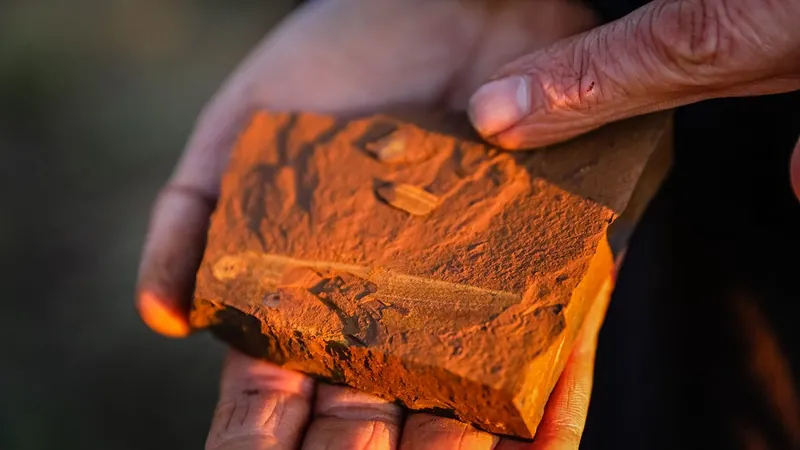
Unveiling the Past: 15-Million-Year-Old Fish Reveals Its Last Supper and Evolutionary Secrets!
2025-03-25
Author: Ming
Introduction
Paleontologists in Australia have made a stunning discovery that dates back 15 million years: fossils of a completely new species of freshwater fish, known as *Ferruaspis brocksi*, complete with the remnants of its final meal still preserved in its stomach.
Discovery Location and Significance
Uncovered at the famed McGraths Flat fossil site in New South Wales, these fossils, published in a recent study in the Journal of Vertebrate Paleontology, mark an unprecedented find in the record of ancient fish. Among the stomach contents of these *Ferruaspis brocksi* specimens were fragments of insect larvae, two insect wings, and a bivalve, which is a mollusk characterized by its two hinged shells—like clams or mussels.
Evolutionary Insights
This astonishing find is the first fossil of a freshwater smelt from the Osmeriformes order identified in Australia, shedding light on when smelt species may have first inhabited this vast island continent. As lead author Matthew McCurry from the Australian Museum and the University of New South Wales points out, the discovery presents a rare opportunity to gain insights into ancient Australian ecosystems and the evolutionary history of fish during the Miocene epoch, around 11-15 million years ago.
Rare Insight into Smelt Species History
Smelts are relatively numerous in various regions globally, particularly in the U.S., where species like the rainbow smelt and the delta smelt can be found. However, before this discovery, the fossil record for these fish and their ancestors in Australia was alarmingly sparse, making it difficult for scientists to trace their arrival and evolution.
Fossil Preservation Techniques
The fossils of *Ferruaspis brocksi* were encased in goethite, an iron-rich mineral, and through advanced microscopic analysis, the team was able to preserve remarkable details of the fish's anatomy, including the position of bones, fins, and even the color cells that helped shape its appearance.
Coloration and Ecological Role
What’s more, the discovery of fossilized pigment cells, known as melanophores, has provided groundbreaking clues about the fish's coloration. The analysis suggests that *F. brocksi* had a darker hue on its back, a lighter belly, and distinctive lateral stripes—traits not previously reconstructed for extinct fish species.
Implications for Australian Ecosystems
McCurry stated, "The fossils formed between 11 and 16 million years ago and illustrate that the Central Tablelands of NSW were once thriving temperate rainforests." The contents of their stomachs indicate that these ancient fish primarily feasted on small phantom midge larvae, offering a glimpse into their ecological roles.
Conclusion and Future Research
Also noteworthy is how this discovery contributes to our understanding of Australia's broader evolutionary landscape, marking significant steps in piecing together the mystery of how fish species have adapted and evolved on the continent. The implications for both freshwater and marine ecosystems are profound, making this discovery a major milestone in paleontology.
Stay tuned as researchers continue to sift through this rich site, potentially unlocking even more secrets from the ancient waters that once teemed with life!



 Brasil (PT)
Brasil (PT)
 Canada (EN)
Canada (EN)
 Chile (ES)
Chile (ES)
 Česko (CS)
Česko (CS)
 대한민국 (KO)
대한민국 (KO)
 España (ES)
España (ES)
 France (FR)
France (FR)
 Hong Kong (EN)
Hong Kong (EN)
 Italia (IT)
Italia (IT)
 日本 (JA)
日本 (JA)
 Magyarország (HU)
Magyarország (HU)
 Norge (NO)
Norge (NO)
 Polska (PL)
Polska (PL)
 Schweiz (DE)
Schweiz (DE)
 Singapore (EN)
Singapore (EN)
 Sverige (SV)
Sverige (SV)
 Suomi (FI)
Suomi (FI)
 Türkiye (TR)
Türkiye (TR)
 الإمارات العربية المتحدة (AR)
الإمارات العربية المتحدة (AR)